At the Bowen Orbital Spaceport facility, in northern Queensland, the first all-Australian orbital rocket is preparing for lift-off. Eris is a three-stage rocket designed and built by Aussie startup Gilmour Space Technologies. Now fully assembled, Eris is awaiting a green light from the Australian Space Agency (ASA) to begin its maiden launch. There’s a lot hinging on the success of this 23m-tall, 30-tonne spacecraft; if all goes as planned, Australia will become the 12th country to have created and launched its own rocket into orbit.
In many ways, it’s surprising the country hasn’t reached this milestone sooner. Australia was once a major player in the early days of the Space Race, partnering with the USA to build radio telescopes and tracking stations to support NASA’s Apollo programs during the Cold War. Australia was also only the third country to build and launch a satellite from its own soil.
But by the early 1970s Australia’s space activities began to lose steam; rocket testing at the Woomera Prohibited Area in South Australia dwindled and there was little economic incentive to contribute to NASA’s post-Apollo missions. Australia’s political ties with the USA, Europe and Asia granted it access to foreign-owned space technology without any need to develop its own national space program.
Government funding in space became sporadic; short-lived initiatives – such as the Australian Space Office – were bankrolled by one federal government and dissolved by the next. In 2023 the federal government terminated its $1.2 billion Australian satellite program and withdrew funding from three more space projects, including one to bankroll spaceports and launch sites across Australia.
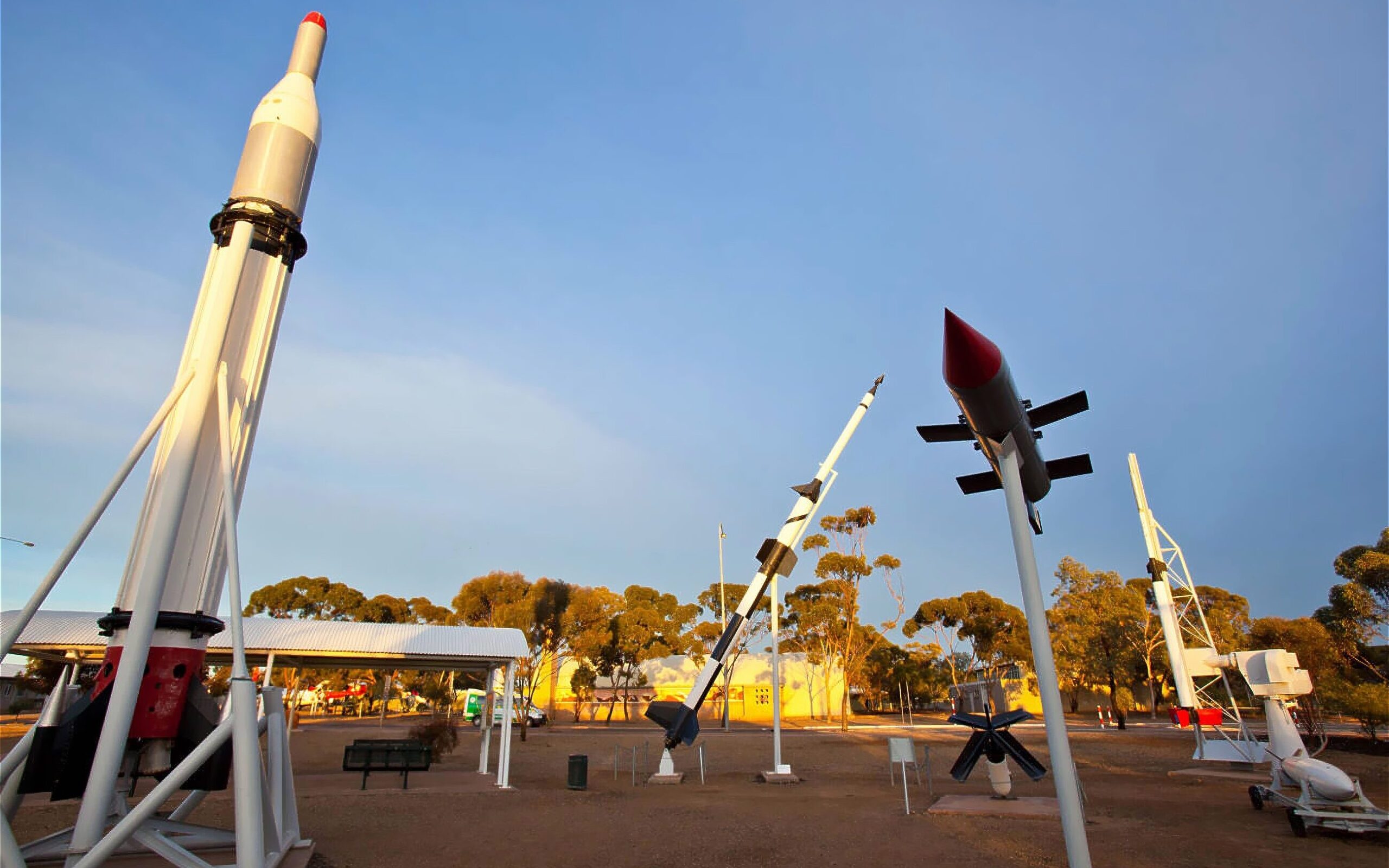
Jeremy Hallett, Executive Chair of the Space Industry Association of Australia (SIAA), says that the government’s lukewarm interest in funding its space sector – be it at a federal, state or territory level – makes Australia a bit of an international outlier. “When you compare [Australia] with the rest of the G20, for example, the other 19 countries are significantly increasing their investment into their space capability domestically, and Australia’s has been dropping, so it’s kind of counter to the international trend,” he says.
The SIAA is Australia’s peak body for space. Its members represent all branches of the Aussie space sector, from fledgling 10-person startups to government departments, law firms, academia and manufacturers from every cog in the supply chain. These entities are forging Australia’s reputation in space and helping put Australia on the map. Next year the SIAA will host the International Astronautical Congress in Sydney. The annual conference, which Jeremy describes as “the Olympics of space”, is expected to receive 6000 delegates from overseas.
Despite these achievements, Australia has yet to achieve sovereign space capability. It’s the reason why Australia is regarded as an “emerging spacefaring nation” by the European Space Policy Institute, despite its Cold War space heritage. “A lot of the measure of the success of a space sector is the ability to put objects on orbit, which Australia can’t do alone yet,” Jeremy says. “Of course, the traditional space powers – the USA, Russia, China, Japan and Europe, through the European Space Agency – have led the charge there, which is unsurprising. But I don’t think we’re far behind. Australia’s capability to manufacture and launch spacecraft is still in the early stages of development, and that’s being solely driven, at this point, by commercial enterprise.”
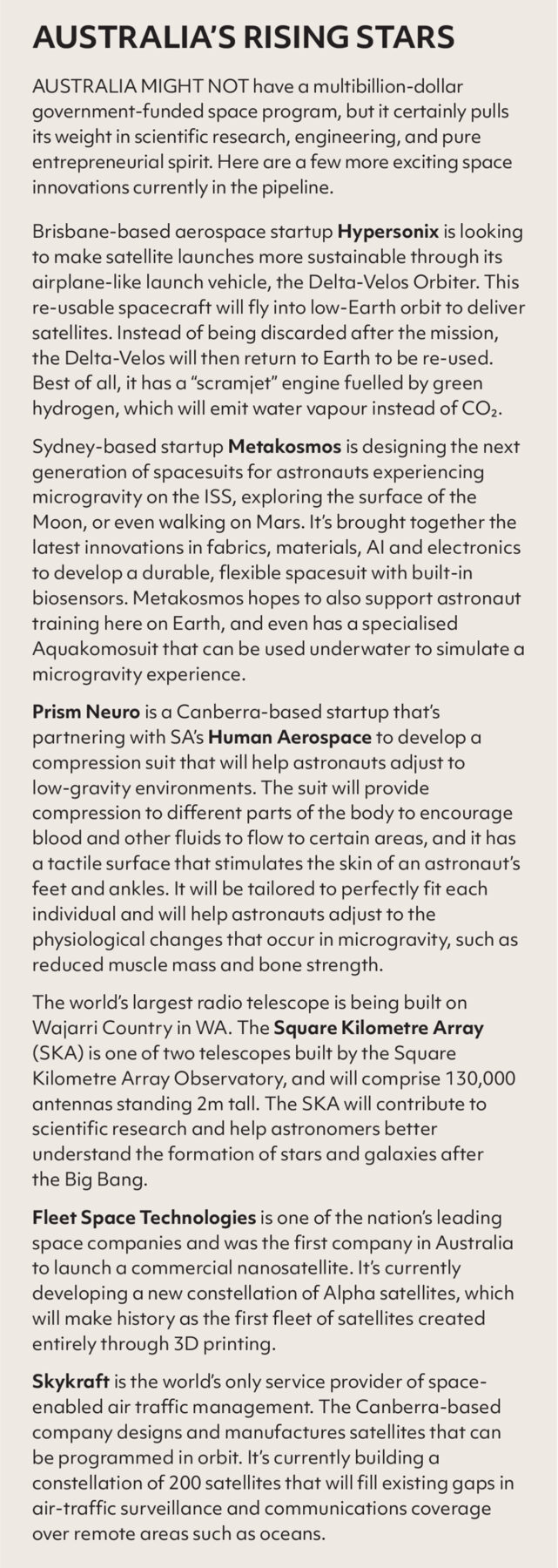
Gilmour Space Technologies is no exception. Australia’s foremost rocket company is headed by civilians and funded by venture capitalists, not government. Adam Gilmour, CEO of Gilmour Space, founded the company in 2012 with his brother James after a 20-year career in banking. The self-taught rocket scientist had spent several years monitoring the emerging commercial space market before hanging up his gloves in the corporate world and pursuing his lifelong passion for space.
Gilmour Space began building rockets in 2015 – three years before Australia even had a space agency. “You have to transition from ‘every single person you met just thought you were crazy’, to moving beyond ‘crazy’ to ‘impossible’,” Adam says. “We had to get so many different approvals to do what we’re doing, and you have to walk so many different people through the technology – what’s going on, what are the risks.” Today, Gilmour Space has 180 employees and is valued at more than $605 million.
Adam says the past several years have been an ongoing process of learning, building and rebuilding, with many hurdles thrown in along the way. In 2019 Gilmour Space’s first rocket – One Vision – failed its test launch after a pressure regulator in the oxidiser tank malfunctioned. But Adam was not deterred; to date, only one private space company has successfully launched a rocket on its first attempt. “Because we haven’t had a rocket business in the country, I can’t go and just poach people from other companies to start mine like you can in Europe, Japan, India and the USA,” Adam says. “We’ve had to build a lot of our knowledge from scratch.”
It’s never been more important to develop Australia’s sovereign capability in space. The meteoric rise of smartphone technology and on-demand internet means we rely on satellite technology more than ever before. “Space technology is an enabling technology; it’s one of those technologies that you use every day, every hour, every minute, but you can’t see it – so you don’t realise it,” Adam says. “But what people don’t know is we [Australia] pretty much 100 per cent rely on foreign companies in other countries for all of our space technology – communications, Earth observations, GPS – you name it, everything is foreign-owned. And I think it makes us very vulnerable to rely on other countries, because if they have a political clash or a regime change, or they don’t want to help anymore, you’re suddenly cut off.”
Whether the Eris rocket launch proves successful or another learning curve, Adam says this is just the beginning for Gilmour Space. “The majority of the revenue is in low-Earth orbit, but we think the business is going to start expanding into lunar activities and we want to participate in that,” he says. He has his sights set on longer-range targets, too; one day he wants Gilmour Space to enter the human spaceflight market. “We want to develop a crew capsule and then build a rocket big enough to take people up into space,” he says.
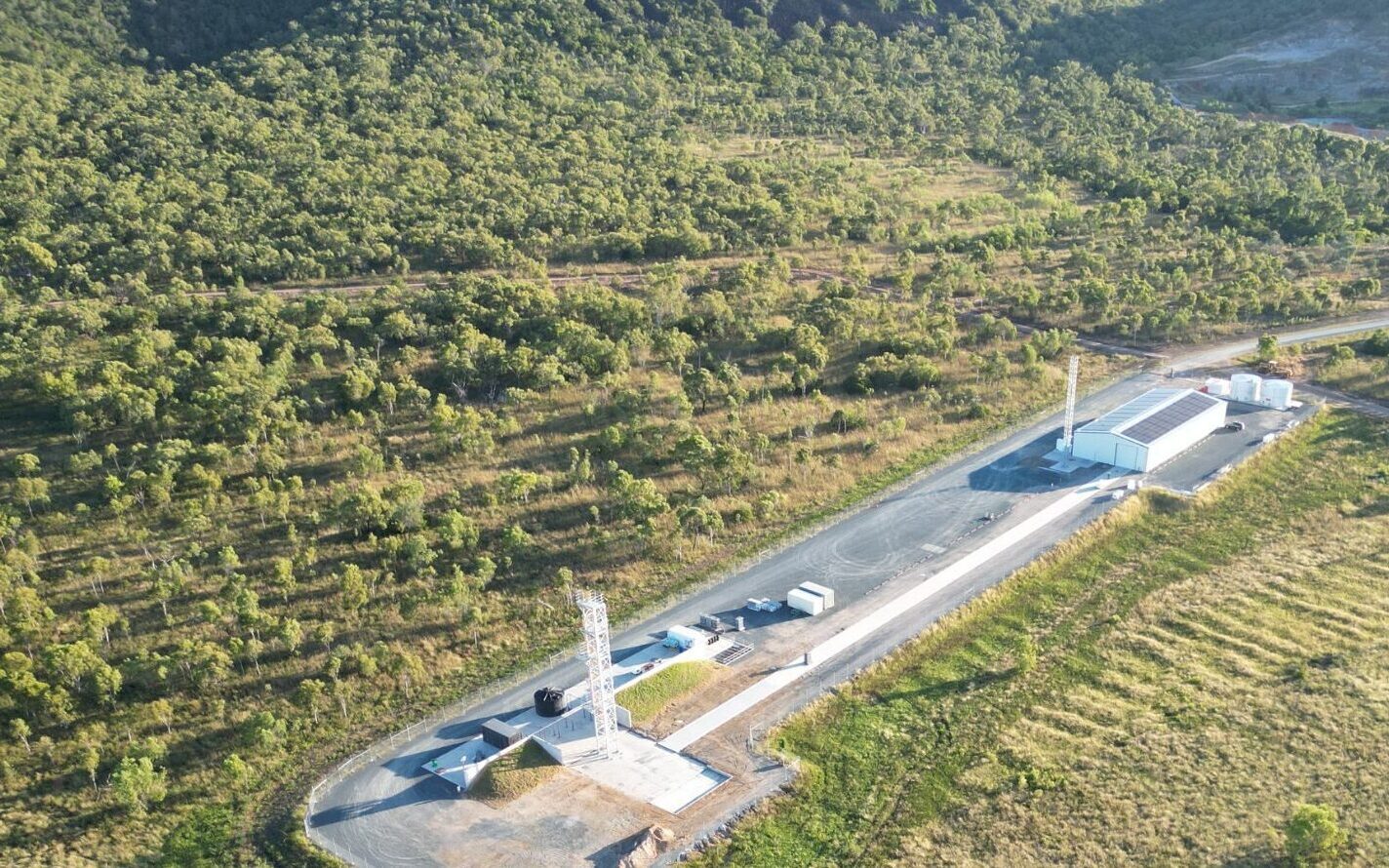
Remote medicine supports life in space
This decade will see astronauts return to the Moon for the first time in 50 years, as part of NASA’s Artemis program. The Artemis mission intends to establish the first long-term human presence on the Moon and, ultimately, prepare for the first crewed missions to Mars. Australians will be helping every step of the way.
Dr John Cherry is a rural doctor and Antarctic medical practitioner who specialises in providing healthcare to some of the most isolated people in the world – including astronauts. “Space medicine means supporting the healthcare of astronauts who are in an isolated condition, currently aboard the space station but soon to be in longer-duration flights as we look to go back to the Moon and onwards towards Mars,” John says. “Space medicine is narrow in a way, because it’s focused on space, but it’s also really broad because it covers all the different areas of medicine.”
John is a director of the Australasian Society of Aerospace Medicine. He’s worked with space agencies across the globe to provide medical training to astronauts and improve remote healthcare systems. He helped redesign the European Space Agency’s medical training curriculum and is currently prepping NASA astronauts for their return to the Moon.
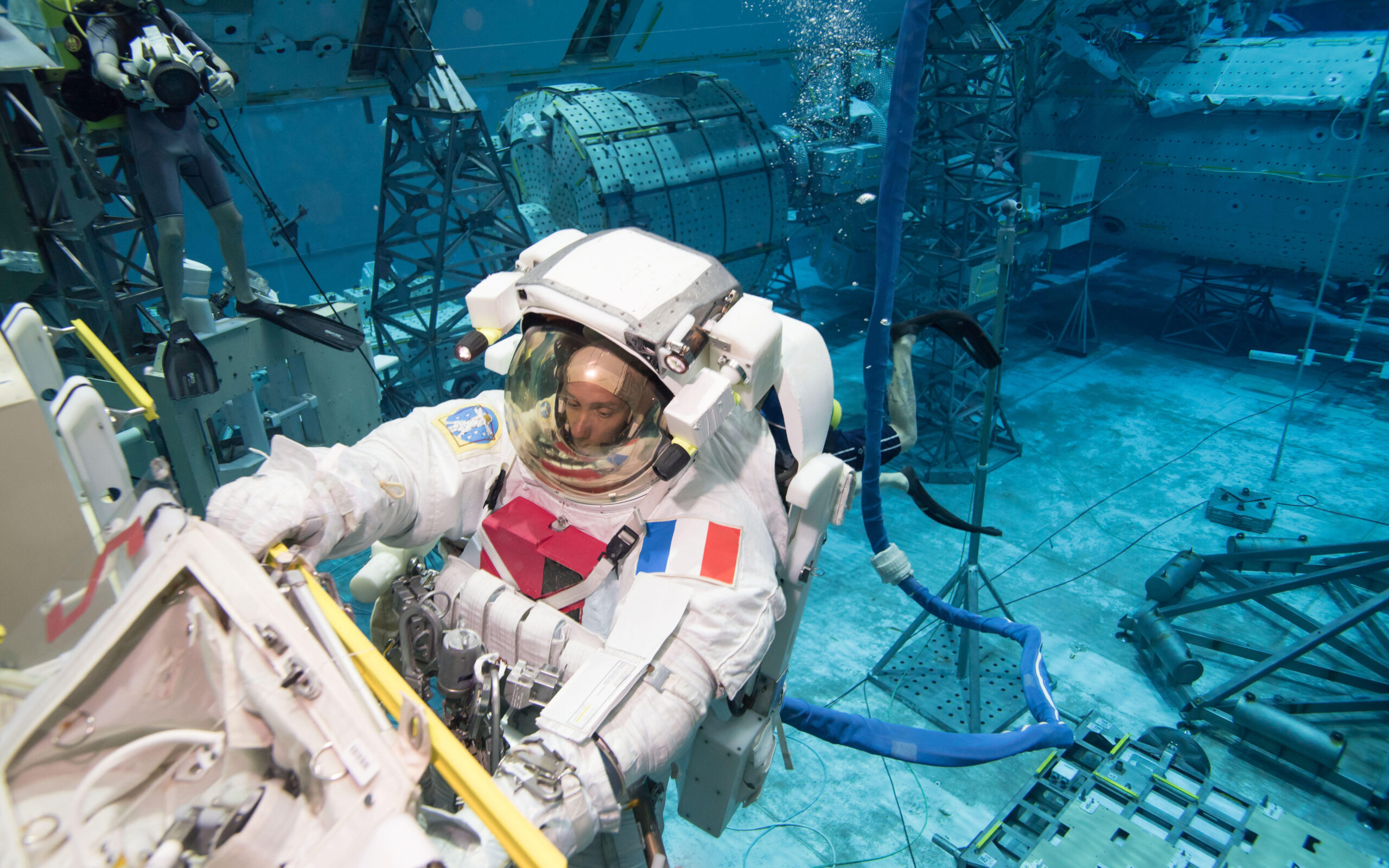
“Across Australia as a field, we’re looking at ways that we can support astronauts who are going to be further from Earth than we’ve been for more than 50 years,” he says. “That means the astronaut crews are further from medical assistance [so] they require an increased level of autonomy to deal with medical events that occur.” Astronauts on the International Space Station (ISS) can evacuate and return to Earth within 24 hours or less in the case of a medical emergency. But NASA’s Artemis mission has kicked things up a notch. “When we go to the Moon, the medical evacuation time could be a couple of weeks; when we go to Mars it might be nine months or more, depending on where we are at in the journey,” John says.
The isolation experienced by astronauts is one reason Australia is considered a world leader in space medicine. Our strengths lie in our unique remote medicine and telemedicine capabilities, alongside a long history of providing support to Antarctic expeditioners. “We have this huge body of knowledge when it comes to supporting communities and individuals living and working in really remote and extreme environments, be that outback Australia, the bush, supporting military deployments or teams in remote settings like Antarctica,” John says. “So, much like Antarctic expeditioners who are isolated for extended periods of time over the Antarctic winter, those are the same conditions that astronauts will soon experience in terms of isolation in these longer-duration space flight missions. That means the medical care, and the medical training they receive, needs to be adapted to suit those models.”
Innovations from space have a number of trickle-down technologies that could improve medical models here in Australia. “Rural and remote communities within Australia often struggle with the tyranny of distance, and have a worse healthcare disparity than our metropolitan colleagues,” John says. “Many of the medical solutions we’re developing are not only applicable to astronauts in a spacecraft many hundreds of thousands of kilometres away, but also rural and remote communities in Australia, be it advanced telemedicine developments, remote imaging, or remote monitoring of physiological markers by using wearable biosensors. All of these things can benefit rural and remote Australia and help breach that rural–metropolitan healthcare divide.”
 Related: Back to the Moon: Australia’s mining expertise at forefront of new era of space exploration
Related: Back to the Moon: Australia’s mining expertise at forefront of new era of space exploration
Outback plants to feed astronauts
Australian plant scientists are also looking to support astronaut health by improving their diets with space-grown plants.Several groups across the world have successfully grown plants on the ISS under various mock conditions. But Lunaria One, a Victoria-based startup, will take this one step further and attempt to grow plants on the Moon’s surface. “Keeping astronauts healthy is really challenging,” says Professor Caitlin Byrt, a plant biologist at the Australian National University and science adviser to Lunaria One. “[An astronaut’s] diet affects their wellbeing, not just from a nutritional perspective, but also from a psychological perspective. Humans tend to be happier when they’re eating nice fresh food.”
As for space biology, Caitlin says the research generated by the startup will have spin-off applications that will benefit Earth, especially at a time when food security is threatened by climate change.
“Understanding how to support plant life in some of the most extreme kinds of conditions that you can imagine is useful for a range of reasons,” she says. “Being able to understand how to build systems that support rapid propagation of fresh foods can help in situations such as natural disasters here on Earth.”
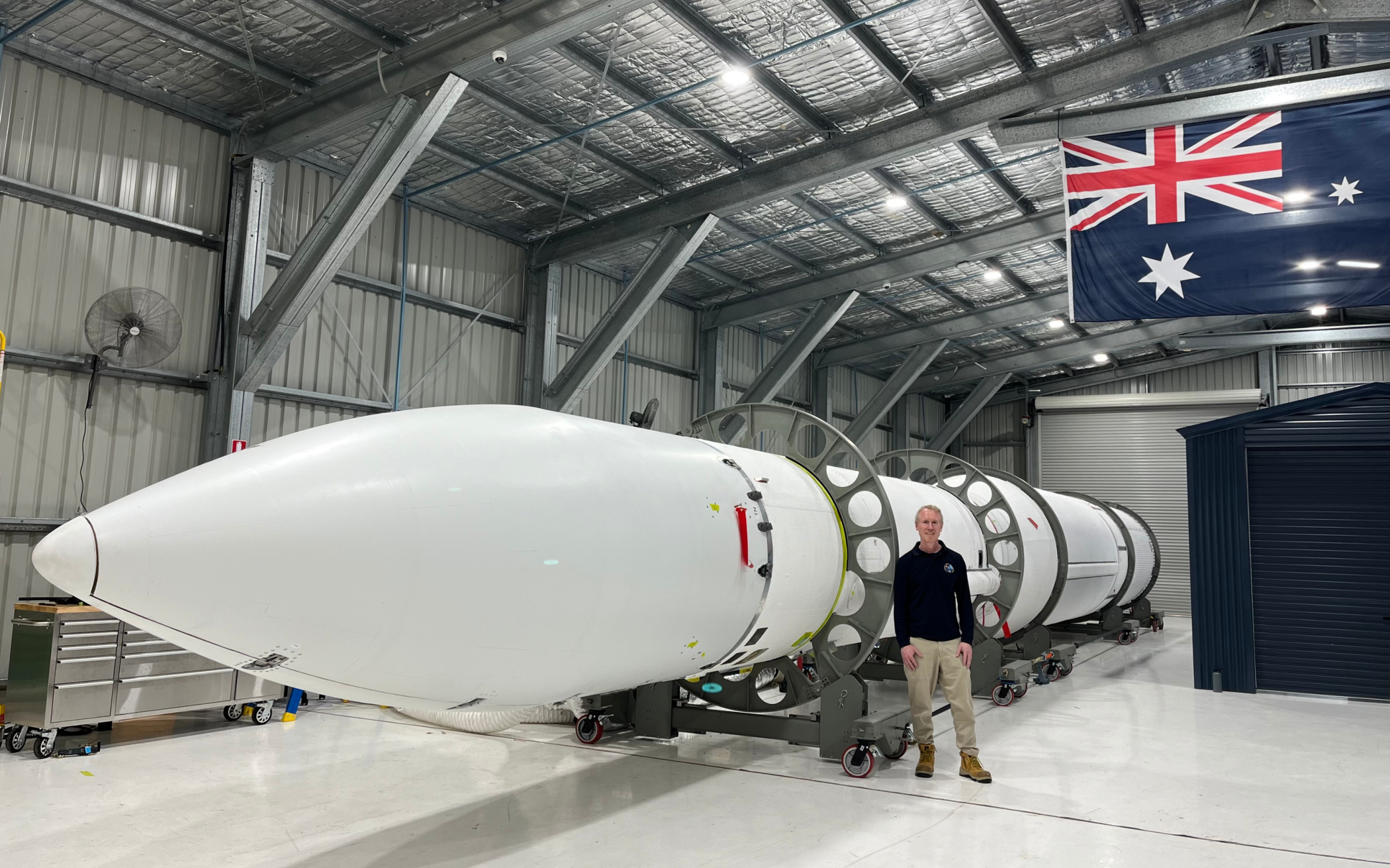
Data collected from previous missions means scientists have a pretty good understanding of the Moon’s environmental conditions, from its fluctuating temperature extremes, radiation levels and day lengths. Lunaria Oneis using this data to design sealed growth chambers that will create a buffer against the harsh lunar environment and – hopefully – allow plants to thrive.
Lunaria One is interested in “resurrection species” – plants that have evolved and adapted to survive in desert environments by entering a dormant state when water is scarce. Found in deserts across Australia, resurrection species, include five-minute grass (Tripogon loliiformis),which Lunaria One is experimenting with. “Some [resurrection species] have this ability to dry down to 10 per cent of their normal water content,” Caitlin says. “They have the capability to go into stasis – like putting their biology on pause – and then regrow again when water is resupplied.”
This dormancy period can last for months, or even years, making them ideal for long-term space travel. “We’re wanting our plants to be in a little bit of a stasis for the journey,” Caitlin explains. “We have to control the moisture very closely, because moisture is a trigger for the plant to regrow. Applying humidity at the right time can kick off [plant growth] and will let those plants have a shot at growing on the Moon.”
Tracking space debris
The shift from government-funded national space programs to the private sector signifies a new era, popularly called NewSpace or Space 2.0. Each year a record number of satellites are put into orbit as the technology reduces in size and becomes cheaper to manufacture and launch.
There are currently about 8300 satellites zipping around Earth. Nearly half of these are Starlink satellites, launched by Elon Musk’s SpaceX in 2019. SpaceX plans to eventually put 42,000 satellites into orbit. Its competitors also have their own “mega constellations” in the works, including Amazon’s Project Kuiper and China’s Hongyan constellation, which are forecast to reach 3200 units and 13,000 units respectively.

Associate Professor Alice Gorman, a Flinders University space archaeologist, says Earth might see as many as 100,000 new satellites launched in the coming decade. “The density of stuff – in low-Earth orbit particularly – is increasing exponentially,” she says. “We have more launches happening, so that means more rocket stages that are discarded will be falling back to Earth. It will mostly fall over the ocean, just because there’s a lot of it, and it will fall over unpopulated areas or low-population areas, because there’s more of that than densely populated areas, but the risk something might end up falling on a town or on someone’s house is going to increase.”
As a space archaeologist, Alice studies material culture in space, from planetary landing sites to space junk. Space junk (also called orbital debris) is any human-made object in or from space that serves no purpose. It ranges from nuts and bolts to defunct satellites and discarded rocket stages. As more satellites are put into orbit, Alice says that falling space junk is likely to become a more regular occurrence.
In 1979 debris from NASA’s first space station, Skylab, rained down over southern Western Australia. But there have been a few recent cases, too. On 9 July 2022 a farmer in the Snowy Mountains discovered a shard of space junk in his paddock, standing upright like a plinth. In the following weeks more pieces were found, later identified as fragments from a SpaceX rocket stage.
Less than a year later, a mysterious, acorn-shaped metal cylinder washed ashore at Green Head Beach in WA and made international headlines. The ASA identified the mysterious object as debris from an Indian rocket involved in a satellite launch.
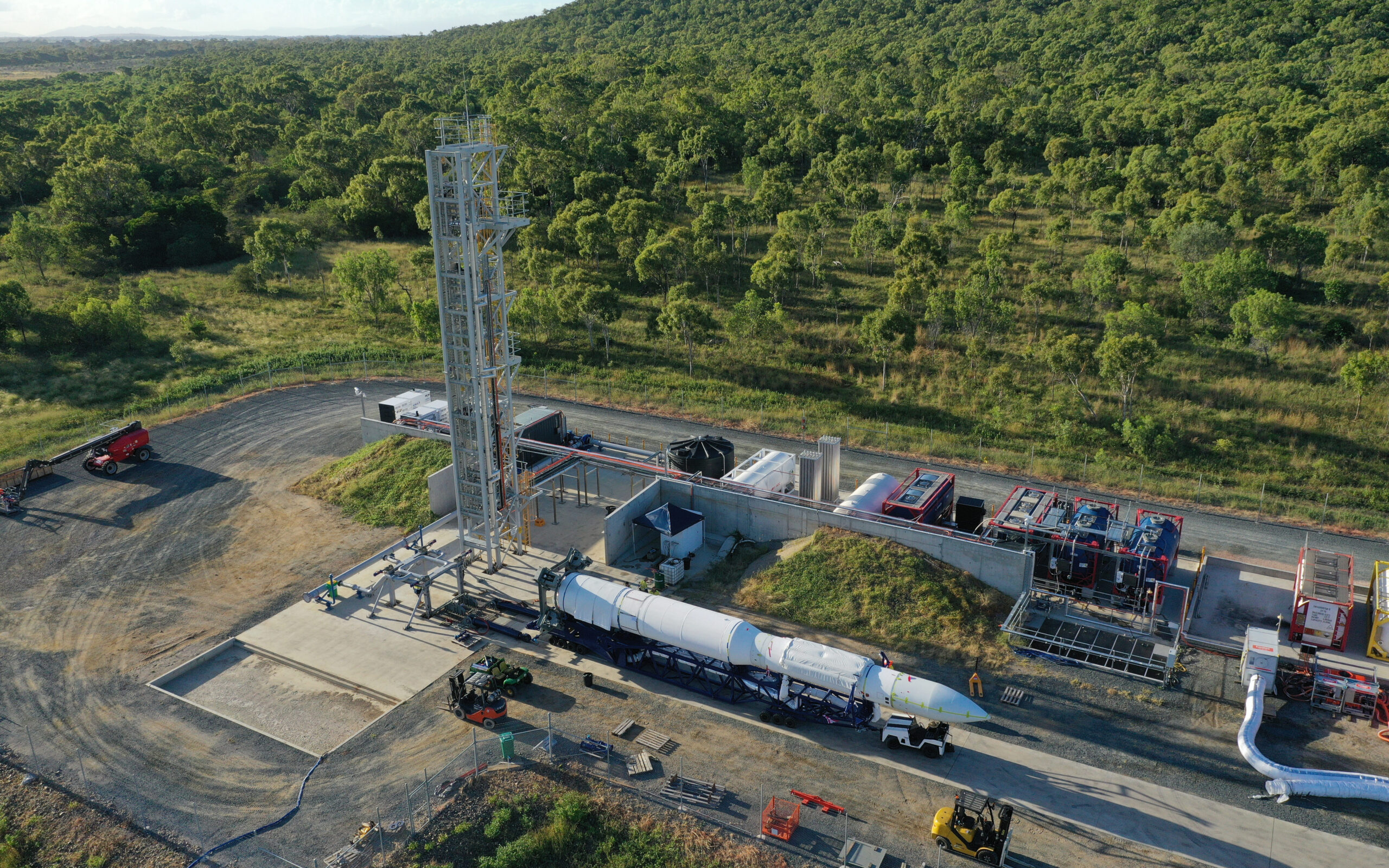
2024. Image credit: Gilmour Space Technologies
Alice says Australia will be disproportionately impacted by falling space junk compared with the USA, Europe or Asia. She cites a study, published in 2022 by The University of British Columbia, Canada, that suggested the Southern Hemisphere is at greater risk of casualties from rocket body re-entries than the Northern Hemisphere. Atmospheric scientists are also worried about potential environmental impacts; trace metals from spacecraft, such as aluminium, copper and lithium, have been discovered in the stratosphere and might degrade the ozone layer. These satellites are also creating light pollution, blotting out starry skies and even interfering with astronomy observations and equipment.
This doesn’t necessarily mean that Earth would be completely cut off from space, merely that certain regions of orbit would become unusable. “The debate is, how close are we to this event?” Alice says. “Some people say Kessler Syndrome will happen in 20 years; others say it’s hundreds of years off – there’s no consensus.”
Equally concerning is the risk of Kessler Syndrome – in which the debris from colliding space objects triggers a chain reaction of collisions. “When Kessler Syndrome is reached, you don’t have to launch anything new into orbit; the collisions would be a self-sustaining thing that would make the risk of launching incredibly great. You wouldn’t be able to stop it,” Alice explains. “Even if we put nothing else into orbit, Kessler Syndrome would still happen.”
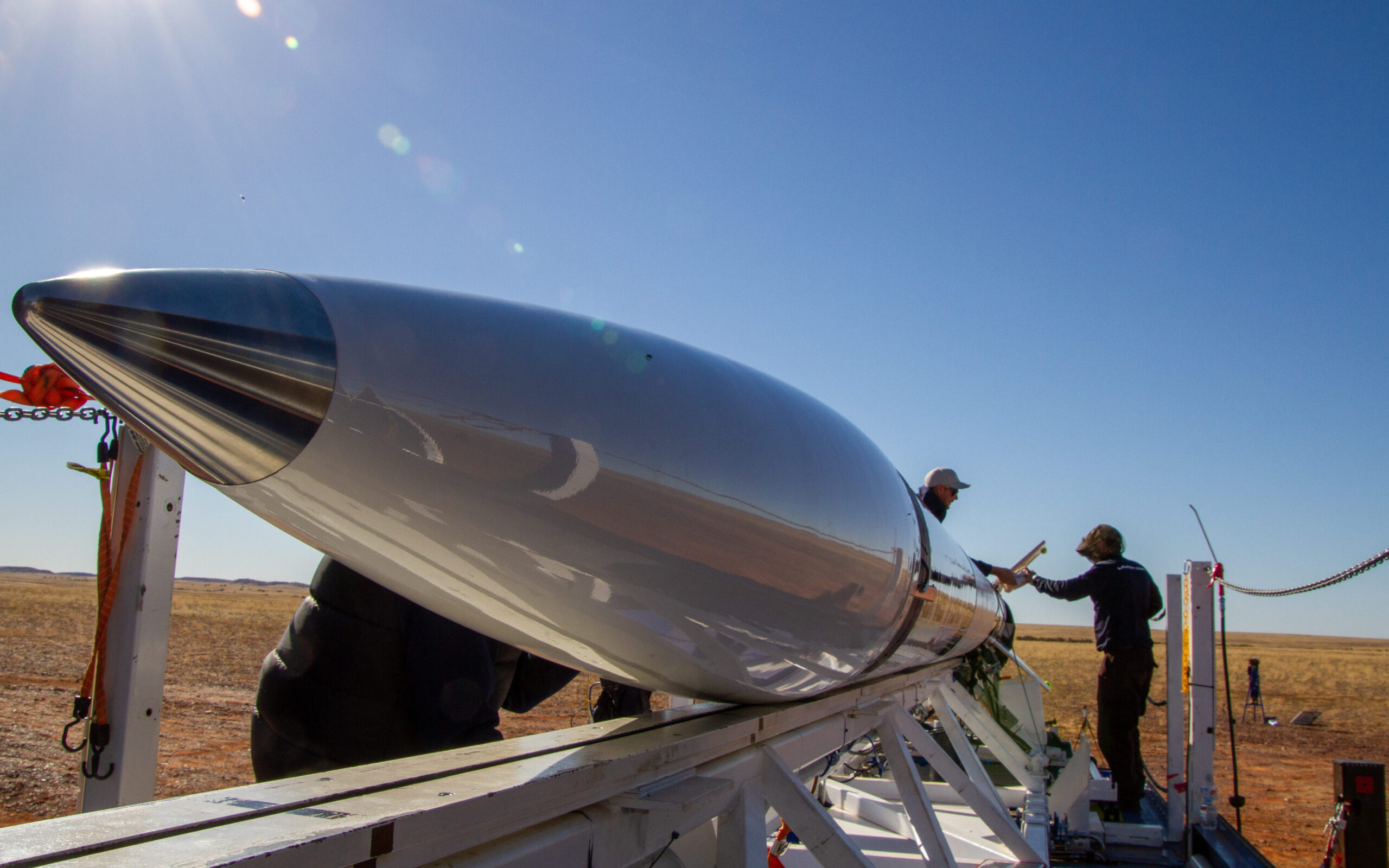
Vacuuming up space junk
It’s been nearly 50 years since astrophysicists Donald Kessler (USA) and Burton Cour-Palais (Britain) penned their seminal paper about the risks of Kessler Syndrome, and to date there’s been no successful removal of a piece of orbital debris. But startups have cropped up around the world looking to tackle this problem – including Adelaide-based startup Paladin Space. Paladin Space has engineered a satellite payload that can “hoover up” multiple fragments of small space junk in a single mission.
Harrison Box, the creator and CEO of Paladin Space, likens the technology to Wall-E, the titular character in Pixar’s 2008 sci-fi film. “In the movie, Wall-E compacts all the trash into a block and ejects it – it honestly is very similar,” Harrison says. “[The re-usable debris removal satellite] ingests the debris, compresses it, and then we eject the container. We then re-slot the satellite bus with a new empty container and continue the mission. The differentiator of our technology is that it can capture multiple items in a single mission, including small items like fragments.”
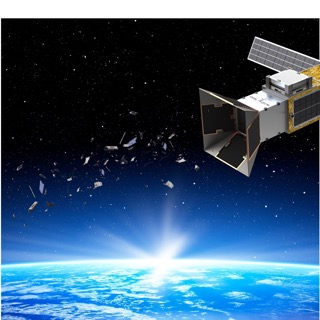
Space junk is generally divided into three size classes. The most numerous are the small pieces (anything less than 1mm in size). The medium-size class includes anything between 1mm and 10cm, and anything greater than 10cm is considered large. Paladin Space is going after the small fragments, some of which are too tiny to be tracked and monitored by radio telescopes such as the Space Surveillance Telescope in Exmouth, WA. Regardless of their size, these fragments are zooming above Earth at speeds of 7.5–8km per second, 10 times faster than a bullet. Even the tiniest piece of space junk can cause significant damage. In 2016, for example, a paint fleck famously cracked a window on the International Space Station.
This problem is only going to grow as mega constellations launch more objects into orbit.“There’s about 9000t of [space junk] already in orbit, but in 5–10 years it could be double or triple that,” Harrison says. “We’re trying to get there and solve the problem, or remediate the problem, before Kessler Syndrome kicks in.” Harrison’s technology has yet to be deployed on its first mission, but he hopes it will be launched into orbit by 2026. “This is a very immature field,” he says. “It’s worth noting that nobody yet has actually removed a piece of debris from orbit. It’s never happened. There’s been a mission that’s gone up in the last couple of weeks from one of our competitors. They might capture [a piece of debris], and they might not, but that’s the sort of state we’re in at the moment. It’s really very unexplored.”
Harrison is confident of the technology, but says securing funding is the biggest hurdle. “At the moment one of the challenges is raising enough money and convincing investors and government officials to get on board with the project,” he says. “Funding is tough, because Australia is emerging into the space market. We don’t have that heritage yet of multiple launches, multiple satellites for investors to fall back on and say, ‘Well, we’ve invested in that technology; it’s worked really well.’
“The Australian space industry focuses a lot at the moment on Earth observation, climate control technology, stuff that they can enable and use very quickly for commercial gain. And I think that’s probably partly the reason why we struggle to secure funding, because this is a global problem we’re solving, not just one for Australia.”





